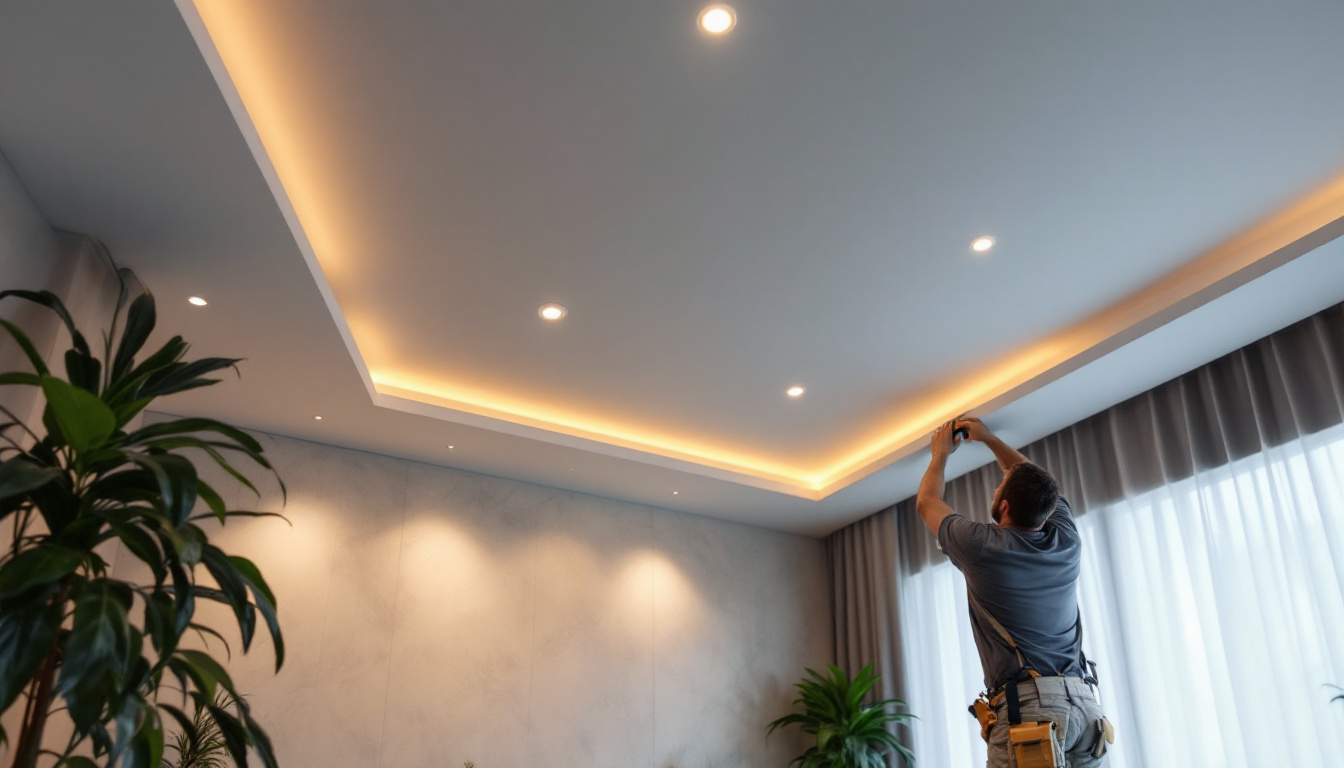
Relamping tanning beds is an essential task for lighting contractors who work in the beauty and wellness industry. With the increasing popularity of tanning beds, ensuring they are properly maintained and functioning at optimal levels is crucial for customer satisfaction and safety. This guide will provide a comprehensive overview of the relamping process, including the tools needed, safety precautions, and best practices.
Before diving into the relamping process, it’s important to understand the key components of tanning beds. Familiarity with these parts will help in troubleshooting and performing maintenance effectively. A well-maintained tanning bed not only enhances the user experience but also extends the lifespan of the equipment, making it a worthwhile investment for both personal and commercial use.
Tanning beds typically use two main types of bulbs: fluorescent and high-pressure lamps. Fluorescent bulbs are commonly found in traditional tanning beds, while high-pressure lamps are used in more advanced models. Understanding the differences between these bulbs will aid in selecting the right replacements during the relamping process. Each type of bulb has its own unique characteristics that cater to different tanning preferences, making it essential to choose wisely based on individual needs.
fluorescent bulbs emit UV rays that stimulate melanin production, resulting in a tan. They usually have a lifespan of around 800 to 1,200 hours. In contrast, high-pressure lamps provide a more intense tanning experience and have a longer lifespan, often exceeding 1,500 hours. Knowing the type of bulb in use is vital for effective relamping. Additionally, the wattage of the bulbs can influence the tanning speed and depth, so it’s important to consider this factor when replacing bulbs to ensure a consistent tanning experience for users.
Ballasts are electrical devices that regulate the current to the bulbs, ensuring they operate efficiently. They can fail over time, leading to flickering lights or complete failure of the tanning bed. Regular inspection of ballasts is crucial during maintenance. Different tanning beds may require specific types of ballasts, so it’s advisable to keep a record of the ballast specifications for each bed to streamline the relamping process and avoid any compatibility issues.
Reflectors play a significant role in directing UV light towards the user. Over time, reflectors can become tarnished or dirty, reducing the effectiveness of the tanning bed. Cleaning or replacing reflectors should be part of the relamping process to maintain optimal performance. In addition, the angle and material of the reflectors can affect the distribution of UV light, which can lead to uneven tanning if not properly maintained. Ensuring that reflectors are in good condition not only maximizes the efficiency of the tanning bed but also enhances the overall tanning experience, allowing users to achieve a more uniform and desirable tan.
Having the right tools and materials on hand is essential for a smooth relamping process. Below is a list of commonly used items that lighting contractors should prepare before starting the job.
Safety goggles and gloves are critical for protecting against UV exposure and potential glass breakage. Screwdrivers and socket wrenches will be needed to access the bulbs and other internal components. A multimeter is useful for testing electrical connections and ensuring everything is functioning properly after relamping. Additionally, having a sturdy ladder or step stool can be invaluable for reaching high fixtures safely, allowing for a more thorough inspection of the lighting setup.
It’s also wise to have a headlamp or portable work light on hand, especially in dimly lit areas, to ensure visibility while working. This can help prevent accidents and make the process more efficient, as you’ll be able to see every detail of the relamping task without straining your eyes or missing critical components.
When relamping tanning beds, it is essential to use high-quality replacement bulbs that meet the manufacturer’s specifications. This ensures compatibility and optimal performance. Always check the wattage and type of bulb required for the specific tanning bed model.
In addition to bulbs, consider having spare ballasts and reflectors on hand. This proactive approach can save time during maintenance, as these components often wear out simultaneously with the bulbs. Furthermore, it’s important to familiarize yourself with the specific characteristics of the bulbs you are using, such as their lifespan and color temperature, as these factors can significantly impact the tanning experience for clients.
Moreover, keeping a record of the maintenance history for each tanning bed can be incredibly beneficial. Documenting when bulbs were last replaced and any issues encountered can help in predicting future maintenance needs and ensuring that all equipment operates at peak efficiency. This not only enhances customer satisfaction but also extends the life of the tanning beds, making it a smart investment for any lighting contractor or salon owner.
Safety should always be the top priority when working with tanning beds. The following precautions should be observed to ensure a safe working environment.
Wearing appropriate personal protective equipment is essential. This includes safety goggles to protect the eyes from UV rays and gloves to prevent cuts from broken glass. Additionally, wearing long sleeves and pants can provide extra protection from UV exposure.
Before starting any work on the tanning bed, ensure it is unplugged from the power source. This will prevent electrical shocks and injuries. Use a multimeter to confirm that there is no electrical current present before proceeding with the relamping process.
Now that the necessary tools and safety precautions are in place, it’s time to delve into the step-by-step relamping process. This section will guide lighting contractors through the entire procedure, ensuring a thorough and efficient relamping.
Begin by ensuring the tanning bed is turned off and unplugged. Remove any accessories or covers that may obstruct access to the bulbs. It’s also advisable to clean the exterior of the tanning bed to create a tidy workspace.
Carefully remove the old bulbs from the tanning bed. Depending on the model, this may involve unscrewing end caps or unclipping the bulbs from their sockets. Handle the bulbs with care, as they can be fragile and prone to breaking.
As each bulb is removed, inspect it for signs of wear or damage. This can provide insight into the overall condition of the tanning bed and indicate whether other components may need attention.
With the bulbs removed, take the opportunity to inspect the ballasts and reflectors. Look for any signs of damage or corrosion. If the ballasts appear faulty, replace them at this stage.
Next, clean the reflectors using a suitable cleaning solution and cloth. This will enhance the efficiency of the tanning bed by ensuring maximum UV light is directed towards the user.
Once the old bulbs have been removed and the components cleaned, it’s time to install the new bulbs. Ensure that the replacement bulbs match the specifications of the old ones. Insert the new bulbs carefully, ensuring they are securely in place.
After installing the bulbs, double-check that all connections are tight and that there are no loose wires. This step is crucial for ensuring the safety and functionality of the tanning bed.
Before closing up the tanning bed, it’s important to test the new bulbs. Plug the tanning bed back in and turn it on. Observe the bulbs for any flickering or irregularities. If everything appears to be functioning correctly, proceed to close the tanning bed.
After completing the relamping process, ongoing maintenance is vital for the longevity of the tanning bed. Regular inspections and cleaning can prevent issues from arising in the future.
Schedule regular inspections of the tanning beds to check for any signs of wear or damage. This includes checking the bulbs, ballasts, and reflectors. Keeping a maintenance log can help track when inspections are due and when relamping is necessary.
Establish a cleaning protocol for the tanning beds. Regularly clean the exterior and interior components to prevent dust and debris buildup. This not only improves the appearance of the tanning beds but also ensures optimal performance.
Despite proper maintenance, issues may still arise with tanning beds. Understanding common problems can help lighting contractors troubleshoot effectively.
If the bulbs flicker after relamping, it may indicate a faulty ballast or poor electrical connections. Inspect the ballasts and wiring to ensure everything is secure and functioning correctly. Replacing the ballast may be necessary if the issue persists.
Uneven tanning results can occur if the reflectors are dirty or damaged. Regular cleaning and inspection of reflectors can help mitigate this issue. If cleaning does not resolve the problem, consider replacing the reflectors to ensure even distribution of UV light.
Relamping tanning beds is a crucial task for lighting contractors, ensuring that clients receive safe and effective tanning experiences. By understanding the components, utilizing the right tools, and following safety protocols, contractors can perform this task efficiently and effectively.
Regular maintenance and inspections will not only prolong the life of the tanning beds but also enhance customer satisfaction. By staying informed about common issues and troubleshooting techniques, lighting contractors can provide exceptional service in the beauty and wellness industry.
In conclusion, mastering the relamping process is essential for any lighting contractor working with tanning beds. With the right knowledge and approach, this task can be completed safely and efficiently, ensuring a successful outcome for both contractors and clients alike.
Ready to take your tanning bed services to the next level? LumenWholesale is here to support your lighting needs with premium, spec-grade lighting products at unbeatable wholesale prices. Say goodbye to local distributor markups and hello to a vast selection of reliable, high-performance lighting that meets the highest industry standards. With free shipping on bulk orders, you can stock up on all the lighting supplies you need for a seamless relamping process. Don’t compromise on quality or value—choose LumenWholesale for Wholesale Lighting at the Best Value and elevate your client’s tanning experience today.

Discover expert tips and best practices from lighting contractors on selecting and installing LED wall sconces for outdoor spaces.

Discover expert tips on shop kitchen island lighting from a lighting contractor.

Discover how choosing between shunted and non-shunted tombstones can significantly impact cost efficiency for lighting contractors.

Discover how recessed ceiling LED lights are transforming the lighting industry and giving contractors a competitive edge.